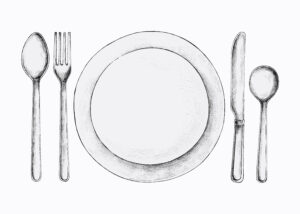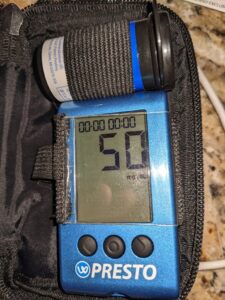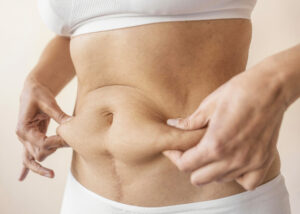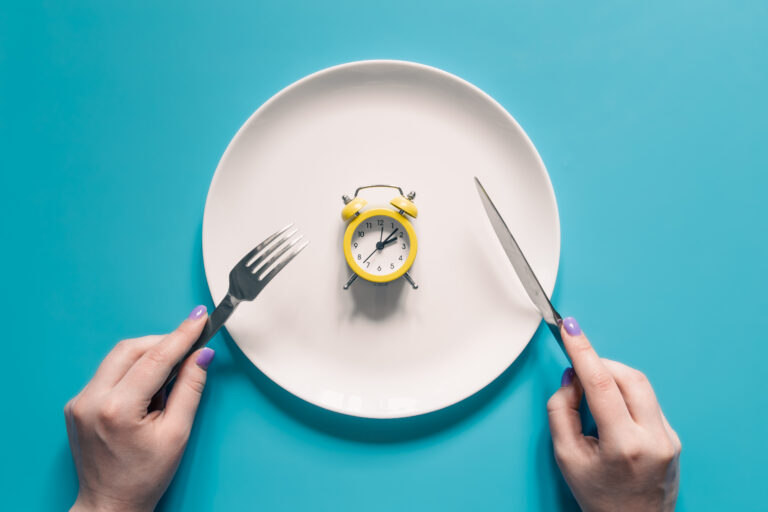Fasting: Thoughts From My 6-day Fast
I recently completed a 6-day fast and have a few thoughts to share about it. It’s not the first time that I’ve done a fast — I’ve done several 7-day fasts in the past, consisting of only water and bone broth. Fasting is an age-old tradition, a practice endorsed by all major religions, by many philosophers, and also by Hippocrates, the “father of medicine”. As with each prior fast, I experimented with various strategies so as to test certain hypotheses. Here are some thoughts and takeaways from this current experiment.
Fasting is a normal part of the human experience.
When I mention fasting,  many people ask whether I am doing a “cleanse”. In a way, one might call it that, but the word “cleanse” is also used in reference to so many ridiculous, gimmicky practices that I prefer to avoid that term. In our modern world, we are constantly surrounded by food as well as incessant messaging to eat more food. Historically, on the other hand, our ancestors often faced adversity when it came to acquiring food – food quality issues, periods of famine, and simply the seasonal variation of food availability. I purposely chose to fast during the 1st week of December, as we enter “the long cold Winter”, conveniently right after our recent celebration of Thanksgiving for the recent harvest season. Historically, fresh produce was not available in Winter, so our supplies would dwindle and have to be rationed. Short periods of fasting in the Winter were probably common, as the food supply in a more “primitive” society would have been more volatile than we experience today.
many people ask whether I am doing a “cleanse”. In a way, one might call it that, but the word “cleanse” is also used in reference to so many ridiculous, gimmicky practices that I prefer to avoid that term. In our modern world, we are constantly surrounded by food as well as incessant messaging to eat more food. Historically, on the other hand, our ancestors often faced adversity when it came to acquiring food – food quality issues, periods of famine, and simply the seasonal variation of food availability. I purposely chose to fast during the 1st week of December, as we enter “the long cold Winter”, conveniently right after our recent celebration of Thanksgiving for the recent harvest season. Historically, fresh produce was not available in Winter, so our supplies would dwindle and have to be rationed. Short periods of fasting in the Winter were probably common, as the food supply in a more “primitive” society would have been more volatile than we experience today.
Fasting is incredibly simple.

Fasting is a tool that can be utilized by anyone and is the cheapest, most effective measure for many health problems including obesity and diabetes. You could spend thousands of dollars on an expensive medication and get a mild reduction in your glucose, or you could employ fasting and see a profound reduction in your glucose, saving money on both medication and food. Can you beat that?
Furthermore, if you ever feel bad when fasting, there’s an incredibly easy way to reverse the effect of the intervention . . . EAT! There’s no need to wait for a medication to wash-out of your body. There’s no need for a medication to treat the side effects of a different medication. Fasting is the easiest intervention to reverse.
Fasting is a mental challenge
People always say that they don’t think they can do it. Admittedly, it does take a bit of mental fortitude, as you must suppress some signals of hunger, especially in the first 2 days. What they don’t realize, though, is that once you enter a state of nutritional ketosis, the hunger sensation mostly goes away. Once you get to that point, it’s relatively smooth sailing.
I started off my 6-day fast with a workout on Day 1, with the intention of burning off the available glucose in my body so that I would enter ketosis more quickly. It was successful. I felt that I was in ketosis by the end of the 1st day, which meant that Day 2 was actually easier for me due to decreased hunger.
Fasting is liberating
We’re so accustomed to the convention of eating three meals a day, with our days structured around meal times. Imagine the freedom of not being tethered to such a schedule and not feeling any pressure to purchase, prepare, or consume meals multiple times per day. By not having to interrupt my days with lunch breaks or snacks, I feel that I was more productive while working during this week. Furthermore, I was relieved of the challenge of navigating the available “hospital food” – a nightmare in itself.
to the convention of eating three meals a day, with our days structured around meal times. Imagine the freedom of not being tethered to such a schedule and not feeling any pressure to purchase, prepare, or consume meals multiple times per day. By not having to interrupt my days with lunch breaks or snacks, I feel that I was more productive while working during this week. Furthermore, I was relieved of the challenge of navigating the available “hospital food” – a nightmare in itself.
Fasting lowers glucose
 Fasting remains one of the most powerful (and underutilized) tools to lower glucose. On the evening of Day 1, my glucose was 82. On the morning of Day 3, my glucose was 66. Day 4, it was down to 50. At that point, I felt really good, fully alert and without hunger. From then, my glucose hovered in the 60’s and low 70’s for the remainder of the 6 days.
Fasting remains one of the most powerful (and underutilized) tools to lower glucose. On the evening of Day 1, my glucose was 82. On the morning of Day 3, my glucose was 66. Day 4, it was down to 50. At that point, I felt really good, fully alert and without hunger. From then, my glucose hovered in the 60’s and low 70’s for the remainder of the 6 days.
Most people cringe at the glucose of 50 and think that I couldn’t possibly be functional, but that’s the archaic conventional teaching that ignores the vast body of science on ketosis. [Note: if I had a glucose of 50 as a patient in the hospital, my nurse would be throwing sugar at me any way possible to bring it to at least 70.]
I was well into nutritional ketosis at that point. We know from some cool research that ketones are actually the preferred fuel source for the brain. Unfortunately, I didn’t have any ketone test strips available to test my ketone levels, but I know that my ketones were quite high; from doing this in the past, I have learned what it feels like to be in ketosis. Another confirmation of being in ketosis was that my wife noticed that my breath smelled unpleasant, as that is typical of ketones being blown off via the lungs.
Fasting liberates fat
It’s estimated that when fasting, we burn about 1/2 pound of fat per day. In my recent 6-day fasting experiment, I lost about 8 pounds, slightly more than one pound per day. Definitely, some of that weight loss was due to water weight. The initial days of a fast, or any diet for that matter, usually consist of loss of water weight, as 4 molecules of water are attached to each molecule of glycogen (stored glucose).
when fasting, we burn about 1/2 pound of fat per day. In my recent 6-day fasting experiment, I lost about 8 pounds, slightly more than one pound per day. Definitely, some of that weight loss was due to water weight. The initial days of a fast, or any diet for that matter, usually consist of loss of water weight, as 4 molecules of water are attached to each molecule of glycogen (stored glucose).
I also noticed several other signs of fat loss myself, including a trimmer midsection and having to cinch my belt tighter. Other people noticed me looking more trim, as well.
Does fat regain occur? Not necessarily. It depends on how you break the fast. See below.
Fasting does more than burn fat
There are amazing benefits to be gained from simply not eating. In addition to the fat loss, I noticed a few other benefits. Being in ketosis is anti-inflammatory, so minor aches and pains disappear. I also experienced a heightened sense of awareness – hard to describe, but I just had periods of time where I felt more alert, as if I was “firing on all cylinders”. Another benefit appeared to be improved quality of sleep. I recalled several vivid dreams during the week and felt that I fell asleep very easily, too.
Breaking a fast is critical
When I first experimented with fasting, I would break my fast too recklessly. I recall treating myself to Dorito’s chips after my first fast, and I’m quite certain that all of those chips were immediately stored as fat. Not a good strategy.
This time, with more wisdom on my side, I broke my fast much more strategically. Because I was anticipating two holiday parties on the day after my fast, I opted to break my fast on the night of Day 6 with a relatively small, high-protein meal – eggs. I had eggs again the next morning and then eased back into my usual eating pattern. It seemed to work well, although a few drinks at a social event that night clearly knocked me out of ketosis.
Summary:
Fasting is a powerful tool and is incredibly safe when done properly. I don’t recommend that anyone tries a multiple-day fast without medical supervision, as there are some pitfalls to be aware of. When it comes to fat loss and glucose regulation, the cheapest tool in the shed remains the most effective.





